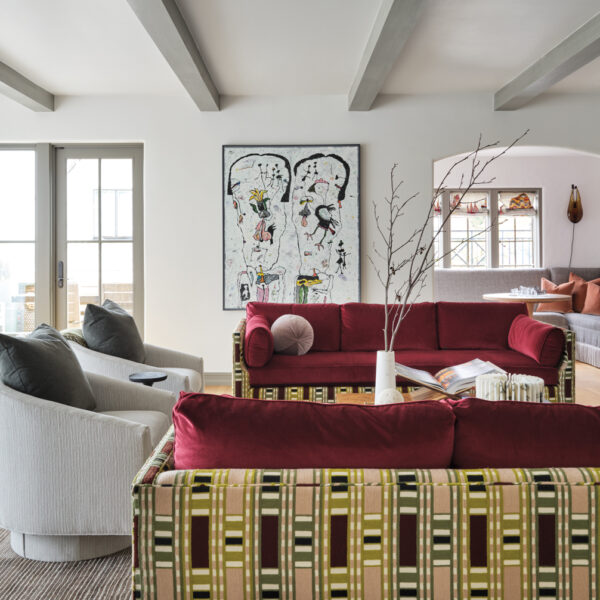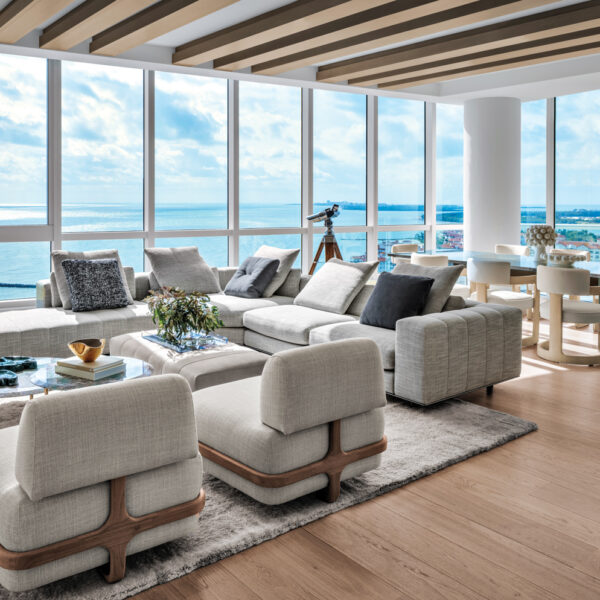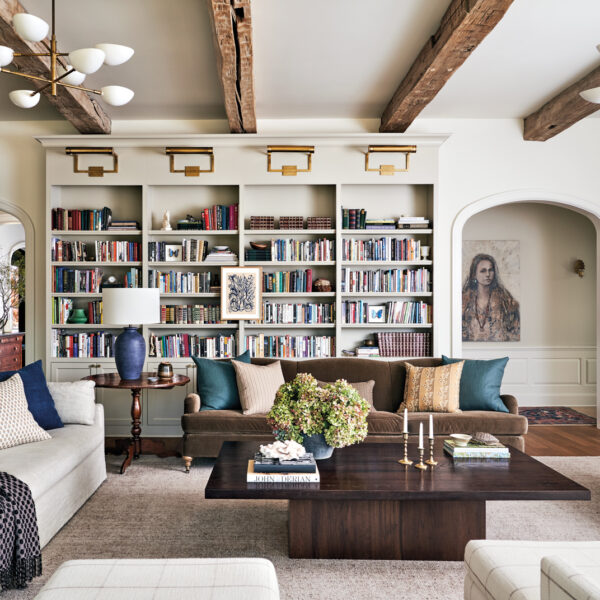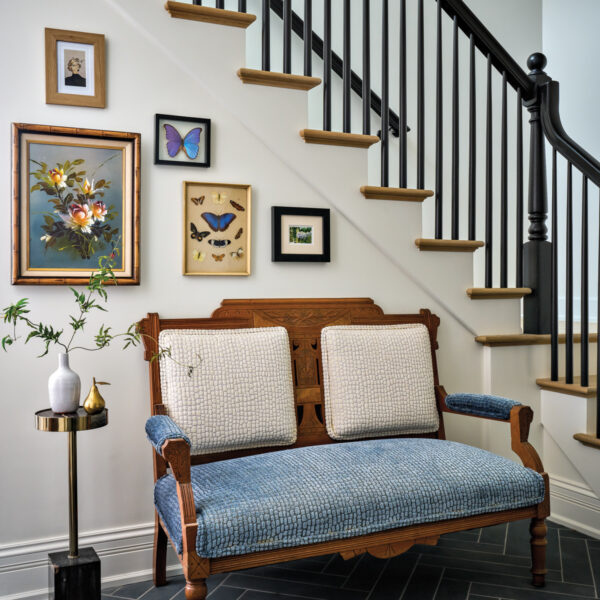Architect Lewis Butler is as much about building relationships with his clients as he is about designing their magnificent homes. The meticulous remodel of a four-story 1908 Italianate-style house in Pacific Heights is a perfect example. “The owners and I go back to 1985,” he says. “We’ve done several projects together. Over the years, they’ve had places in San Francisco, Los Angeles, New York, London, and they even lived in Hong Kong for a while. They’re an international couple who travel extensively and have very good taste—it tends towards traditional with a bit of an edge.”
This time the couple approached Butler to bring their current abode more in line with their lifestyle. While the house faces verdant Lafayette Park and has views of the San Francisco Bay from the rear, the main living level lacked the spacious open feel they were looking for. “It was a traditional, compartmentalized space that progressed from the façade and entry hall rooms to the back of the house,” says Butler. “We didn’t take apart the entire place but were responsible for treating the architecture from the street to the garden in the back. It was a very unusual job.”
Architect Glenda Flaim, an associate principal with the firm and the design lead on the project, started with acquiring an understanding of how the owners would live in the space. “They have daughters who would come visit with friends and often have international guests stay, as well,” she says. “It was important that the house represent their way of life and have multiple spaces where they could lounge or play cards or read or cook without feeling too crowded.”
Beyond an existing formal entry vestibule with an elegant connector stairway, Flaim reconfigured the main floor plan, which she notes had a constrained and chopped-up flow, to include distinct yet interconnected living, sitting, dining, and kitchen areas. Each was specially fitted with windows for extra light and to maximize views. Accomplishing this feat involved considerable skill and effort on the part of builder Steve Nicholls. “It was complicated, because there was a lot of structural work going on and finish work around the structural work,” he explains. “But that’s what our company specializes in. Half of what we did was hidden, such as the welded frames that came in by crane over the top of the house. The frames served to strengthen and support the house after the rooms were opened up. There were some huge steel moments for us.”
Flaim handled the interior design of the newly opened spaces, as well. She took inspiration from the entry and added a coffered ceiling to the new sitting room and kitchen, and chose subtle light gray tones to incorporate dimension to the formerly all-white walls. The kitchen design also features custom cabinetry on the walls and center island, fabricated by Mueller Nicholls’ millwork shop, topped with honed stone and oiled walnut butcher block, respectively. Industrial steel pendants and stainless-steel appliances provide accents.
When it came to the furnishings, Flaim chose clean-lined contemporary pieces to mix with the couple’s heirloom furnishings. Inherited items include two tufted chairs and a carpet in the master bedroom, along with dining chairs—which Flaim juxtaposed with a Saarinen table—and the entry’s round table and grandfather clock. To further play off the family pieces, Flaim brought in a streamlined sofa and armchairs, all by Christian Liaigre, in the sitting room and a pair of Maxalto chairs to appoint the living room. Collectibles from family travels lend additional layers of interest and personality to the design.
Impressively, Flaim’s handiwork also extends to the landscaping of a protective living wall out front, a side courtyard and the back garden. Mostly viewed from the rooms above, the garden features a combination of plantings and trees that change color with the seasons, complemented by a redesigned water feature. “I thought about it as a series of textures and compositions,” she says. “In Italy, where I’m from, we think cohesively about exteriors and interiors and furniture. It should all come together seamlessly.”
—Linda Hayes






